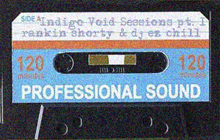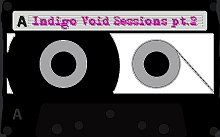Ratio control is available in the Yamaha DX-7, and synths based on the DX-7, like the Native Instruments FM8 also have a control called ‘ratio’. But many FM synths DON'T HAVE A RATIO CONTROL. They only allow you to change the pitch of the ‘effect sound’ with ‘tuning’ controls (for example the LinPlug Albino). This means that you must find your way using awkward half-note steps and ‘fine tuning’.
Why is this a VERY BAD THING?? Because it messes with one of the golden rules of FM:
If the ratio between the basic sound and the effect sound is simple, you get pure and stable sounds. More complicated ratios produce more complicated, unstable sounds.
In the above video, which features the Adonis Pro, there's NO RATIO CONTROL. The controls for tuning the ‘throat’ sound and the ‘hands’ sound are divided in semitone steps (the long drop down menus). The good thing is that the octaves are indicated clearly, but there’s no easy way to tell if a current setting is close to any other simple ratios that help navigate through the FM jungle. So now we just have to trust our ears and try not to get lost. THANK YOU ADONIS PRO!!
Musicians who know a bit about music theory will be able to understand why moving up 3 semitones produces a raw and unstable sound, and why moving up 7 semitones produces a clear, stable sound. That’s because in this example, moving up to ‘7’ is the same thing as having a ratio of 3 (which is a very 'simple' ratio). But believe it or not: you are actually moving up a perfect fifth as well...

OK, so that's a ratio of 3, which is equal to 7 semitones or a ‘perfect fifth’. No wonder some people get confused. If you ask me there should be a LAW against FM synths that don’t have RATIO CONTROL!
Another thing you’ll be able to notice in the Adonis Pro video is the little box to the right of the tuning controls that says Voice Structure. The current value in the box is (A+B)>C>D. These letters refer to ‘Wave A’ / ‘Wave D’ and the Voice Structure actually determines the role each wave (or voice or oscillator or sound) gets to play.
A wave can be ‘hands’ or ‘throat’. The Voice Structure determines how the sounds are connected, or routed. The geeky terminology for this would be an ALGORITHM. We’ll just call it a ‘combination’.

In the video example only Waves C and D are heard. The level of A and B is set to zero. And ‘C>D’ simply means C shakes D. Here’s a basic tactic you should really use if you want to keep things simple: set all unused ‘Waves’ or ‘Oscillators’ (or whatever they’re called on your synth of choice) to zero. Why? Otherwise B might be shaking C, and even A might be contributing something to the sound you’re hearing, and you might get confused...

At the heart of an FM synth are the possible combinations of ‘hand’ sounds and ‘throat’ sounds. There are roughly 3 FM-synth flavours:
1. Classic analog synth style, like the LinPlug Albino. Often a 2 oscillator design where one oscillator is ‘hardwired’ to shake the other oscillator, so there’s no need for the user to select a combination (sometimes called cross modulation).
2. DX-7 based designs like the Ableton Operator and the Adonis Pro, typically have 4 or 6 oscillators which can all be either ‘hand’ or ‘throat’ in a limited number of preset combinations called ‘algorithm’, ‘voice structure’ etc.
3. Matrix designs like the FM8, the Image-Line Sytrus or the LinPlug Octopus, where basically every oscillator can be connected ‘on the fly’ to any other oscillator in any way you want, no presets needed.
So how do you choose the FM synth that’s right for you?
If all you need is a broad palette of relatively static timbres, the 2 oscillator design could already be enough. Especially if you like to work fast, and also if you think of a synth sound as just a stage in a sound design process. Maybe you’ll load the FM timbre in a sampler or process it with certain effects. If you work like this a simple 2 oscillator type of FM might be exactly right for you.
If you want to get deeper into FM and design complex dynamic sounds you’ll need at least the 4 oscillator DX-7 style of FM. But there’s absolutely no need to go all the way. A matrix design with 8 oscillators like the LinPlug Octopus is simply too much.

It takes years of ear training to be able to tell what 5 or 6 oscillators are doing when they are all shaking each other in some funny way. Increasing the number of oscillators to 8 is pure madness. Just the thought of that kind of mess can make you feel sick...
In fact, playing around with FM synthesis can be a bit like sailing on an ocean of sound waves. There are two ways to navigate this ocean:
- you can simply take off on a little sonic journey, make up new destinations as you’re going along and take snapshots every now and then of interesting sounds you find along the way.
- or you may know more or less where you want to go; in this case you might try to ‘compute’ your way to a certain destination, just like a sailor might use charts, a compass and so on.
But whether you travel using maps, radar and gps or find your way intuitively using only the stars as a guide, there are always certain clues that are too obvious too ignore, just like every sailor knows that birds indicate that you’re close to land.

So again, here’s the one clue that’s too obvious to ignore if you don't want to get seasick:
If the ratio between the basic sound and the effect sound is simple, you get pure and stable sounds. More complicated ratios produce more complicated, unstable sounds.
















